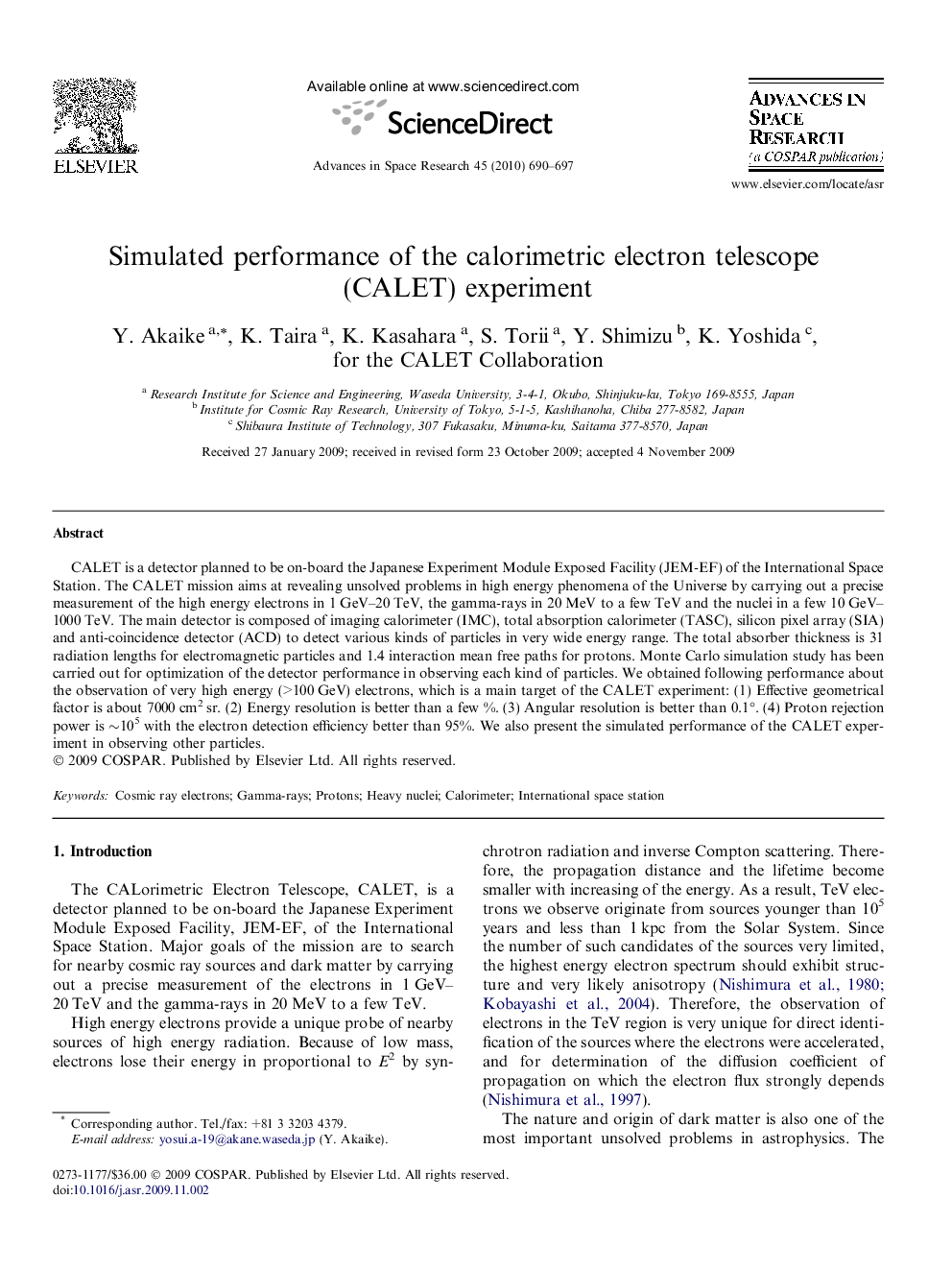| Article ID | Journal | Published Year | Pages | File Type |
|---|---|---|---|---|
| 1765947 | Advances in Space Research | 2010 | 8 Pages |
Abstract
CALET is a detector planned to be on-board the Japanese Experiment Module Exposed Facility (JEM-EF) of the International Space Station. The CALET mission aims at revealing unsolved problems in high energy phenomena of the Universe by carrying out a precise measurement of the high energy electrons in 1 GeV-20 TeV, the gamma-rays in 20 MeV to a few TeV and the nuclei in a few 10 GeV-1000 TeV. The main detector is composed of imaging calorimeter (IMC), total absorption calorimeter (TASC), silicon pixel array (SIA) and anti-coincidence detector (ACD) to detect various kinds of particles in very wide energy range. The total absorber thickness is 31 radiation lengths for electromagnetic particles and 1.4 interaction mean free paths for protons. Monte Carlo simulation study has been carried out for optimization of the detector performance in observing each kind of particles. We obtained following performance about the observation of very high energy (>100 GeV) electrons, which is a main target of the CALET experiment: (1) Effective geometrical factor is about 7000 cm2 sr. (2) Energy resolution is better than a few %. (3) Angular resolution is better than 0.1°. (4) Proton rejection power is â¼105 with the electron detection efficiency better than 95%. We also present the simulated performance of the CALET experiment in observing other particles.
Related Topics
Physical Sciences and Engineering
Earth and Planetary Sciences
Space and Planetary Science
Authors
Y. Akaike, K. Taira, K. Kasahara, S. Torii, Y. Shimizu, K. Yoshida, for the CALET Collaboration for the CALET Collaboration,
